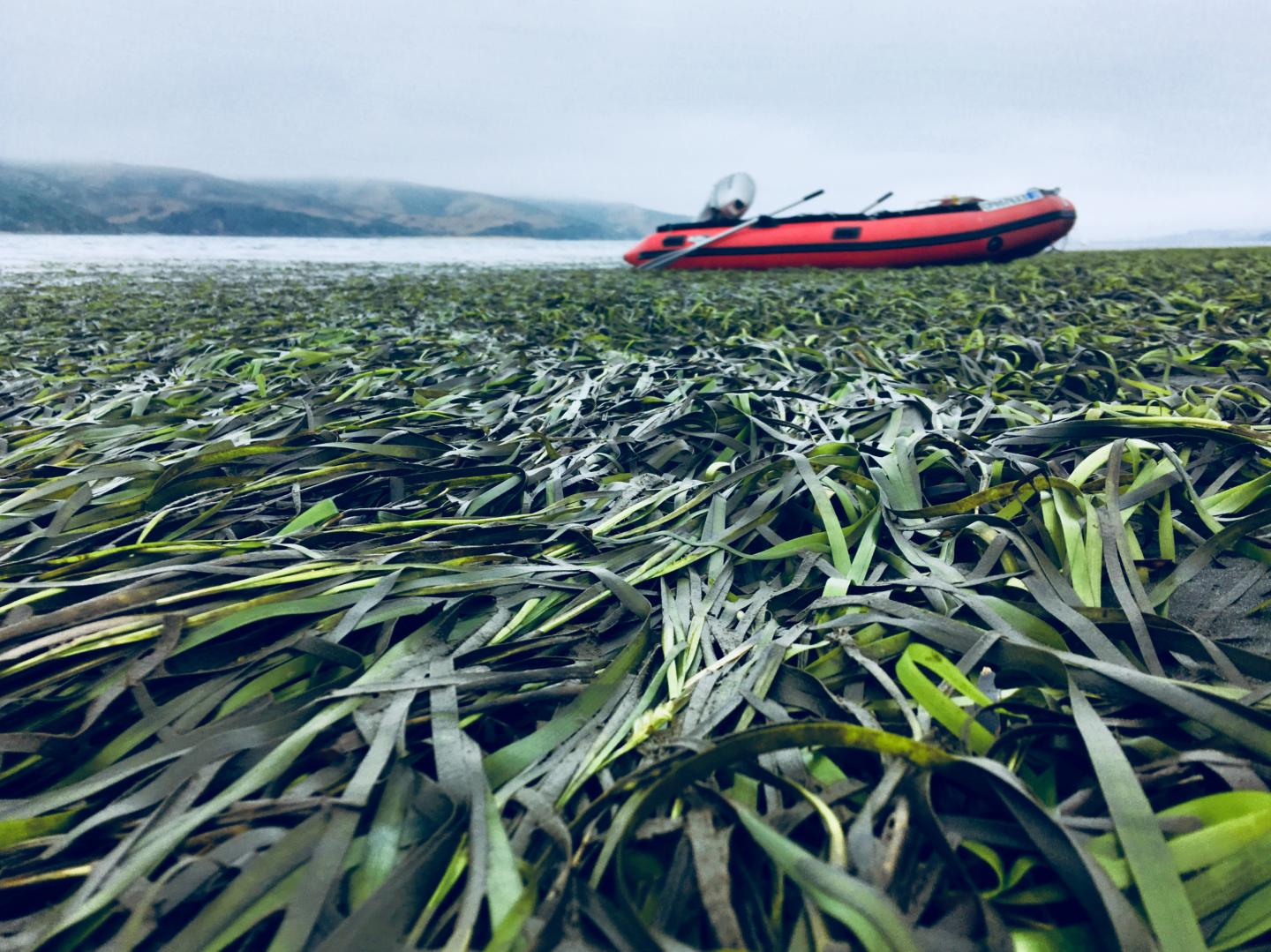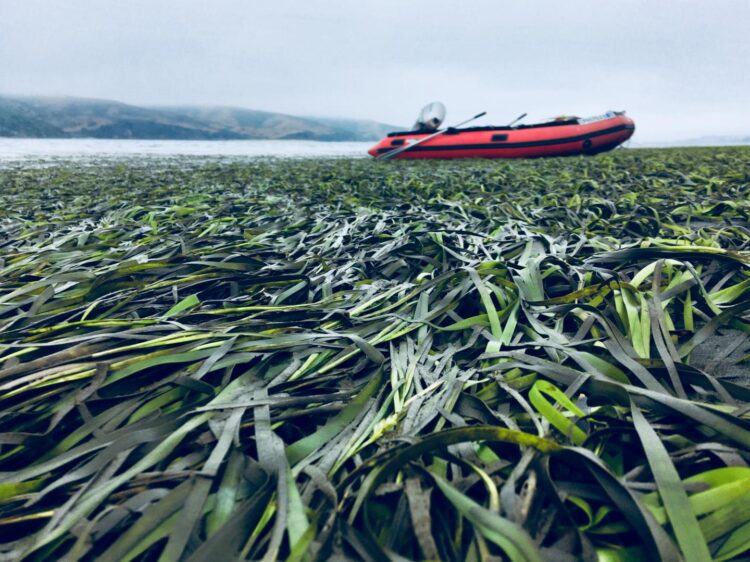Expansive study shows seagrass meadows can buffer ocean acidification

Credit: Melissa Ward, UC Davis
Spanning six years and seven seagrass meadows along the California coast, a paper published today from the University of California, Davis, is the most extensive study yet of how seagrasses can buffer ocean acidification.
The study, published today in the journal Global Change Biology, found that these unsung ecosystems can alleviate low pH, or more acidic, conditions for extended periods of time, even at night in the absence of photosynthesis. It found the grasses can reduce local acidity by up to 30 percent.
“This buffering temporarily brings seagrass environments back to preindustrial pH conditions, like what the ocean might have experienced around the year 1750,” said co-author Tessa Hill, a UC Davis professor in the Department of Earth and Planetary Sciences and Bodega Marine Laboratory.
MARINE FORESTS
When picturing seagrasses, you might think of slimy grasses that touch your feet as you walk along the shoreline. But a closer look into these underwater meadows reveals an active, vibrant ecosystem full of surprises.
Sea turtles, bat rays, leopard sharks, fishes, harbor seals, seahorses, colorful sea slugs, are just some of the creatures that visit seagrass ecosystems for the food and habitat they provide. They are nursery grounds for species like Dungeness crab and spiny lobster, and many birds visit seagrass meadows specifically to dine on what’s beneath their swaying blades of grass.
“It’s a marine forest without trees,” said lead author Aurora M. Ricart, who conducted the study as a postdoctoral scholar at UC Davis Bodega Marine Laboratory and is currently at Bigelow Laboratory for Ocean Sciences in Maine. “The scale of the forest is smaller, but all of the biodiversity and life that is in that forest is comparable to what we have in terrestrial forests.”
NIGHT AND DAY
For the study, the scientists deployed sensors between 2014 and 2019, collecting millions of data points from seven seagrass meadows of eelgrass stretching from Northern to Southern California. These include Bodega Harbor, three locations in Tomales Bay, plus Elkhorn Slough, Newport Bay and Mission Bay.
Buffering occurred on average 65 percent of the time across these locations, which ranged from nearly pristine reserves to working ports, marinas and urban areas.
Despite being the same species, eelgrass behavior and patterns changed from north to south, with some sites increasing pH better than others. Time of year was also an important factor, with more buffering occurring during the springtime when grasses were highly productive.
Seagrasses naturally absorb carbon as they photosynthesize when the sun is out, which drives this buffering ability. Yet the researchers wondered, would seagrasses just re-release this carbon when the sun went down, cancelling out that day’s buffering? They tested that question and found a welcome and unique finding:
“What is shocking to everyone that has seen this result is that we see effects of amelioration during the night as well as during the day, even when there’s no photosynthesis,” Ricart said. “We also see periods of high pH lasting longer than 24 hours and sometimes longer than weeks, which is very exciting.”
Northern California’s Bodega Harbor and Tom’s Point within Tomales Bay stood out as being particularly good at buffering ocean acidification. Pinpointing why and under what conditions that happens across varied seascapes remains among the questions for further study.
CLIMATE CHANGE, SHELLFISH AND OCEAN ACIDIFICATION
The study carries implications for aquaculture management, as well as for climate change mitigation and conservation and restoration efforts.
Globally, ocean acidification is on the rise while seagrass ecosystems are in decline. As more carbon dioxide is emitted on the planet, about a third is absorbed by the ocean. This changes the pH balance of the water and can directly impede the shell formation of species like oysters, abalone and crab.
“We already knew that seagrasses are valuable for so many reasons–from climate mitigation to erosion control and wildlife habitat,” said co-author Melissa Ward, a UC Davis graduate student researcher at the time of the study and currently a postdoctoral researcher at San Diego State University. “This study shows yet another reason why their conservation is so important. We now have a piece of evidence to say the state’s directive to explore these ideas for ameliorating ocean acidification is a valuable thread to follow and merits more work.”
###
Researchers at the UC Davis Bodega Marine Laboratory and its interdisciplinary Bodega Ocean Acidification Research Group are working with coastal communities, shellfish growers, policymakers and other scientists on a variety of research projects aimed at how changing seawater chemistry impacts ecologically and economically important coastal species in California.
Additional coauthors on the study include Eric Sanford, Sarah Merolla, Priya Shukla, Aaron T. Ninokawa, Kristen Elsmore and Brian Gaylord of UC Davis Bodega Marine Laboratory; Kristy J. Kroeker of UC Santa Cruz; and Yuichiro Takeshita of Monterey Bay Aquarium Research Institute.
The study was funded by California Sea Grant and the California Ocean Protection Council.
Media Contact
Kat Kerlin
[email protected]





